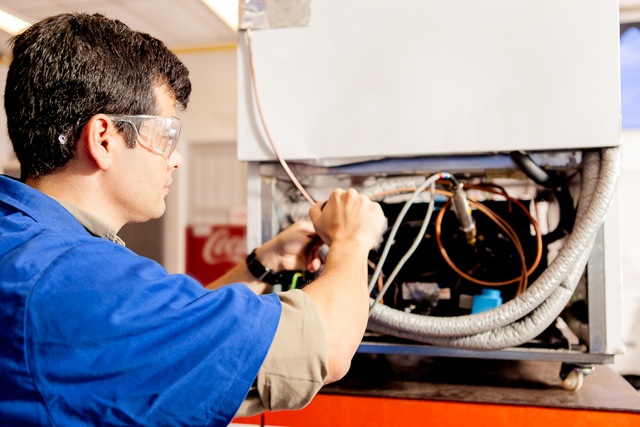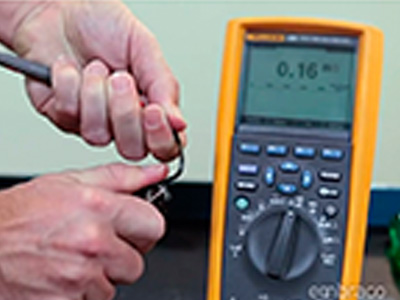[gravata]Sale and use of proven quality spare parts bring benefits.[/gravata]
Original components represent a maintenance guarantee that the equipment will continue operating under the same conditions as a new one.
Substituting refrigeration equipment parts and components is something that’s part of the contractor’s everyday life, who look for specialized retailers to find what they need.
There are original spare parts and those that are called similar, “generic” or “parallel”, usually sold at lower prices. The temptation to choose the cheapest alternative is always great, so it’s important to carefully evaluate the advantages and disadvantages of each of these types of parts. Do you know what the fundamental differences are between them, in terms of durability, application, cost, and results?
The great advantage of generic components is their price, which can often make the difference between selling or not selling (for the shopkeeper). For the contractor, using them can make the quotation given to the customer cheaper, helping it be approved.
However, this first impression needs to be examined more extensively. You should be wary of excessively low prices. There’s no magic capable of producing a quality product at a much lower cost than the original.
Also, rather than just looking at the price or the immediate profit, you must also consider other aspects, that is, check the cost/benefit ratio.
Embraco’s Technical Area recommends that you pay attention to four key aspects when choosing spare parts:
- Quality;
- Reliability;
- Origin (that is, where does this part come from);
- Compatibility with the equipment where it will be used.
“The spare parts we offer to the market undergo careful testing procedures to ensure they’ll function properly”, explains Murilo Favaro, technical specialist at Embraco. “This is an essential differential, which provides the best results and must be taken into account”.
This doesn’t mean, however, that all non-original parts are bad. What’s recommended is to get information about them, especially in relation to meeting technical criteria.
[box side=”alignright” color=”box-verde” pos=”vertical”]
LAW PROTECTS CONSUMERS
According to Procon (Foundation for Consumer Protection and Defense), when repairing products, it’s necessary to use original spare parts, suitable and new, or that maintain the manufacturer’s technical specifications. The “parallel” parts can only be used when the consumer authorizes in writing beforehand. This guidance is provided for by law: it’s the Consumer Protection Code that establishes this, in its Article 21.
[/box]
Cheap ends up being expensive
Even though they have higher prices, original parts represent savings in the long run.
Original parts have guaranteed quality and provide greater durability and better performance for the equipment in which they’re used. Since they’re supplied by the same manufacturer, they represent a maintenance guarantee that the equipment operates under the same conditions, being compatible with other components and designed to the technical specifications demanded.
Besides having an essential role in the technical aspects, using original parts and components can help to prevent problems related to the safety of the equipment’s technician and user. In some cases, applying unsuitable products or those that were manufactured outside the required standards create serious accident risks. This is the case, for example, of refrigerant fluids.
With restrictions on CFCs and HCFCs (see the article on page 14), many low quality and even adulterated products are now being offered in the market. Manufacturers like DuPont have warned of the existence of refrigerants with flammable and/or toxic components in their composition, which have already caused severe explosions and damage to health professionals.
Low quality tubing and electrical components are also a threat to safety, by allowing leaks, electric shocks, short circuits and other critical problems.
The same type of care should be taken with environmental impacts, since some of these “generics” – like the refrigerants themselves – use materials which represent air and water pollution risk or are assembled improperly, increasing the risk of potentially dangerous fluid and gas leaks.
Reconditioned parts?
Another example of non-original components is reconditioned compressors. Generally they have lower performance and shorter useful life, as well as represent risks to the safety of the system where they’ll be used.
The facts show a negative situation: they’re built by putting scrapped compressor parts together. They don’t go through rigorous testing, don’t have official certifications and can have impurities from oxidation and other agents. They’re often produced in conditions that are far from ideal.
Is it worth taking the risk to sell or use one of these compressors? The same question applies to all kinds of non-original parts and components: think about this!
[box side=”alignleft” color=”box-cinza” pos=”horizontal”]
DIFFERENCE IN TECHNICAL STANDARDS EXPLAINED
It’s interesting to know the automotive parts nomenclature, established by the official technical standard ABNT NBR 15296, since this market’s situation is very similar to that of the refrigeration sector:
Original manufactured part: Part that is used in the original product in its assembly line.
Original spare part: Also known as genuine part or legitimate part, this kind of material is used to replace an original manufactured part when maintenance or repair becomes necessary. This part is characterized by being produced in the same manner (same technology) as the part that it will replace and has the same technical characteristics as the original model.
Spare part: Also known as after-sales part, its purpose is to replace an original manufactured part or original spare part, characterized by its suitability and interchangeability, which may or may not have the same technical specifications and quality characteristics (ex. material, strength, processing treatment, performance and durability) of the original manufactured part.
[/box]


